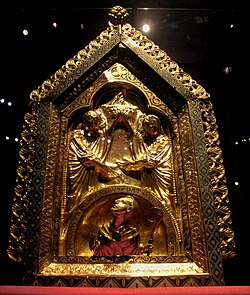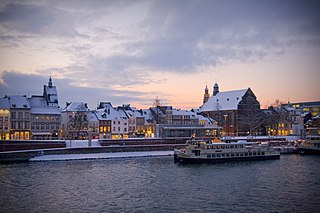
Maastricht is a city and a municipality in the southeastern Netherlands. It is the capital and largest city of the province of Limburg. Maastricht is located on both sides of the Meuse, at the point where the river is joined by the Jeker. Mount Saint Peter (Sint-Pietersberg) is largely situated within the city's municipal borders. Maastricht is adjacent to the border with Belgium and is part of the Meuse-Rhine Euroregion, an international metropolis with a population of about 3.9 million, which includes the nearby German and Belgian cities of Aachen, Liège, and Hasselt.

Tongeren is a city and municipality located in the Belgian province of Limburg, in the southeastern corner of the Flemish region of Belgium. Tongeren is the oldest town in Belgium, as the only Roman administrative capital within the country's borders. As a Roman city, it was inhabited by the Tungri, and known as Atuatuca Tungrorum, it was the administrative centre of the Civitas Tungrorum district.
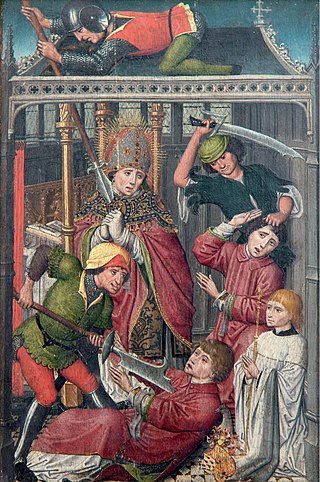
Lambert of Maastricht, commonly referred to as Saint Lambert, was the bishop of Maastricht-Liège (Tongeren) from about 670 until his death. Lambert denounced Pepin's liaison with his mistress or bigamous wife Alpaida, the mother of Charles Martel. The bishop was murdered during the political turmoil that developed when various families fought for influence as the Merovingian dynasty gave way to the Carolingians. He is considered a martyr for his defence of marriage. His feast day is September 17.
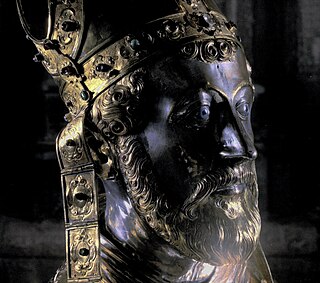
Saint Servatius was bishop of Tongeren. Servatius is patron saint of the city of Maastricht and the towns of Schijndel and Grimbergen. He is one of the Ice Saints. His feast day is May 13.
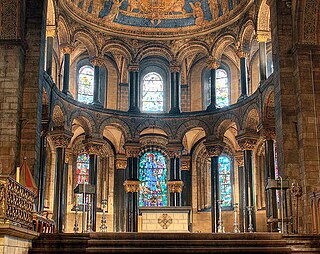
Mosan art is a regional style of art from the valley of the Meuse in present-day Belgium, the Netherlands, and Germany. Although in a broader sense the term applies to art from this region from all periods, it generally refers to Romanesque art, with Mosan Romanesque architecture, stone carving, metalwork, enamelling and manuscript illumination reaching a high level of development during the 11th, 12th and 13th centuries.

The Catholic Church in the Netherlands is part of the worldwide Catholic Church under the spiritual leadership of the Pope in Rome. Its primate is the Metropolitan Archbishop of Utrecht, since 2008 Willem Jacobus Eijk. In 2015 Catholicism was the single largest religion of the Netherlands, forming some 23% of the Dutch people, based on in-depth interviewing, down from 40% in the 1960s.

The Basilica of Saint Servatius is a Roman Catholic church dedicated to Saint Servatius, in the center of Maastricht, Netherlands. The architecturally hybrid but mainly Romanesque church is situated next to the Gothic Church of Saint John, backing onto the town's main square, Vrijthof.
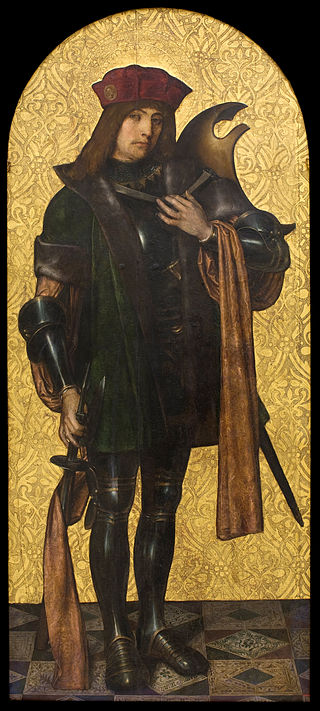
Candidus was a commander of the Theban Legion. The Theban Legion was composed of Christians from Upper Egypt. He is venerated as a Christian saint and martyr.
The Roman Catholic Diocese of Tongeren was an ancient bishopric of Belgium, now a Latin titular bishopric in present Belgium.
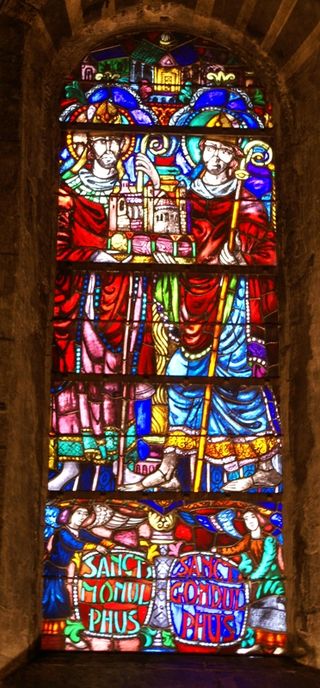
Monulph was a sixth-century bishop of Tongeren and Maastricht, and is revered as a Roman Catholic saint.
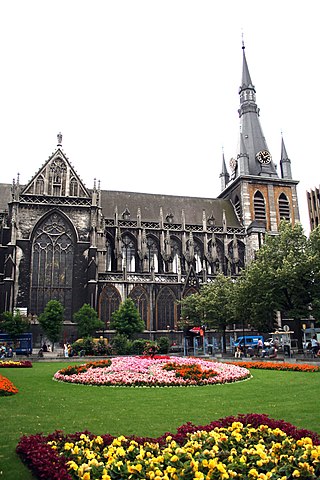
The Diocese of Liège is a Latin Church ecclesiastical territory or diocese of the Catholic Church in Belgium. The diocese was erected in the 4th century and presently covers the same territory as Belgium's Liège Province, but it was historically much larger. Currently, the diocese is a suffragan in the ecclesiastical province of the Archdiocese of Mechelen-Brussels. Its cathedra is found within St. Paul's Cathedral in the episcopal see of Liège.
St. Servatius' College is a boys' school located in Matara, Sri Lanka. The school was established in 1897 by recently arrived Belgian Jesuit missionaries, led by Joseph Van Reeth, first bishop of Galle and Father Augustus Standaert. St. Servatius' College is a national school, which provides primary and secondary education. This is the only school in Sri Lanka where three Governors of the Central Bank of Sri Lanka were educated. This is the only school in Sri Lanka that has produced national team captains in the sports of cricket, football and volleyball.

Aignan or Agnan (358–453), seventh Bishop of Orléans, France, assisted Roman general Flavius Aetius in the defense of the city against Attila the Hun in 451. He is known as Saint Aignan.
Saint Falco, sometimes: Falco of Maastricht or of Tongeren, was according to tradition bishop of Maastricht from 495 until 512. He is also venerated as a Roman Catholic saint.

The Treasury of the Basilica of Saint Servatius is a museum of religious art and artifacts inside the Basilica of Saint Servatius in Maastricht, Netherlands.
The following is a timeline of the history of the municipality of Maastricht, Netherlands.
The pagus or gau of Hasbania was a large early medieval territory in what is now eastern Belgium. It is now approximated by the modern French- and Dutch-speaking region called Hesbaye in French, or Haspengouw in Dutch — both being terms derived from the medieval one. Unlike many smaller pagi of the period, Hasbania apparently never corresponded to a single county. It already contained several in the 9th century. It is therefore described as a "Großgau", like the Pagus of Brabant, by modern German historians such as Ulrich Nonn.
The Roman Catholic Diocese of Maastricht was a Roman Catholic jurisdiction in parts of present Netherlands and Belgium, which has been nominally revived as a Latin titular bishopric.

The Pilgrimage of the Relics or Maastricht Septennial Pilgrimage is a seven-yearly Catholic event in the Dutch city of Maastricht. Originating in the Middle Ages, it developed from a pilgrimage to the grave of Saint Servatius into the present-day religious, historical, cultural and commercial enterprise. Highlights in the programme are the displaying or unveiling of the relics in the main churches and secondly, the processions with the town's main relics. The next pilgrimage will take place in 2025.
